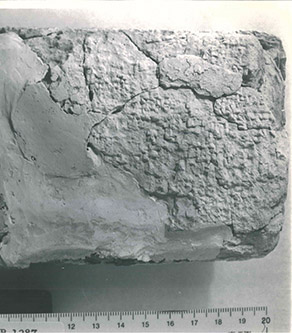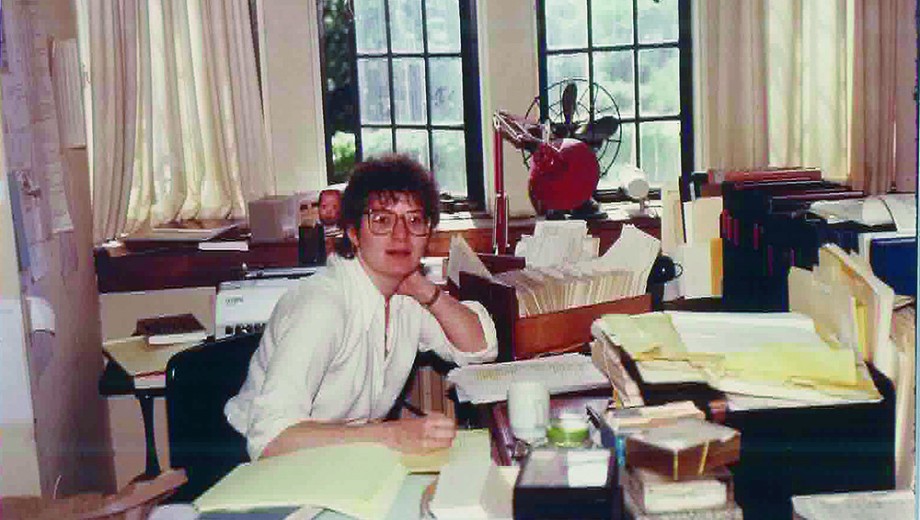Dear Alumni and Friends,
A successful dissertation represents the culmination of the doctoral degree process: it demonstrates scholarly prowess and proves that a student can engage with original sources, ask original questions, and come to original insights. When you begin studying a field—and throughout your career—it’s an ongoing challenge to determine what is indeed “original,” that is, the difference between what you don’t yet know and what is not yet known. Academics often come up with seemingly brilliant ideas only to realize our predecessors already have pursued them without productive ends. The goal of a PhD program is to help young scholars learn how to overcome these and other challenges so they can conduct independent critical research, whether in the academy, government, or business.
Conceiving and completing a dissertation is never easy, rarely linear, and frequently convoluted. My own story is not atypical. I initially began my PhD in Assyriology because I was interested in Mesopotamian literature: the Epic of Gilgamesh, the first flood stories and creation stories, and so forth. But I soon found that I connected with a particular professor who taught Babylonian legal history and liked thinking about textual and social-historical problems through the lens of the law, and my course work shifted. That was my first detour.
The second came when I was researching my dissertation and learned that my main topic, along with access to the necessary primary materials, had been “claimed” by a more senior scholar at another institution. After a brief panic, I decided to refocus my research on an artifact I had originally intended to include as an appendix: a large Sumerian clay prism detailing model court cases and contracts circa 1700 BCE—the kind of handbook that a law professor might put together for his students.
 As I worked to decipher the text and explore the legal context and cultural history, my dissertation shifted to a study of the scholastic tradition in ancient Babylonia: how legal norms and practices were transmitted from generation to generation. Fortunately, I was able to spend crucial time with primary sources in the Louvre, the British Museum, and other collections. That experience and the personal connections I made—with archivists, librarians, and scholars from all over the world—gave depth and perspective to my work.
As I worked to decipher the text and explore the legal context and cultural history, my dissertation shifted to a study of the scholastic tradition in ancient Babylonia: how legal norms and practices were transmitted from generation to generation. Fortunately, I was able to spend crucial time with primary sources in the Louvre, the British Museum, and other collections. That experience and the personal connections I made—with archivists, librarians, and scholars from all over the world—gave depth and perspective to my work.
My choice of mentors and the identification of my primary sources thus shaped my research interests in unanticipated ways. Such serendipitous routes are not uncommon, and my story echoes many others that illustrate why graduate students need access to a broad range of materials, artifacts, and contexts.
Such formative experiences are impossible without strong financial support. This is why we aim to increase the number of travel grants, research awards, and dissertation write-up fellowships available to our PhD candidates. Many of our current and recent graduate students can tell stories similar to mine: academic research is never predictable and uncomplicated but always entails risks, false turns, changes in direction, and unexpected forays into new areas of study. Our responsibility as professors and advisers is to provide our students with the tools they will need to identify and pursue important questions. With your continued support, they will succeed and will enrich their fields and human knowledge.
Sincerely yours,
[wysiwyg_field wf_deltas="0" wf_field="field_article_images" wf_formatter="image" wf_settings-image_link="" wf_settings-image_style="scale-600" wf_cache="1379617438" wf_entity_id="4951" wf_entity_vid="7602" wf_entity_type="node"]
[wysiwyg_field wf_deltas="2" wf_field="field_article_images" wf_formatter="image" wf_settings-image_link="" wf_settings-image_style="scale-600" wf_cache="1379617438" wf_entity_id="4951" wf_entity_vid="7602" wf_entity_type="node"]
Martha T. Roth
Dean of the Division of the Humanities

